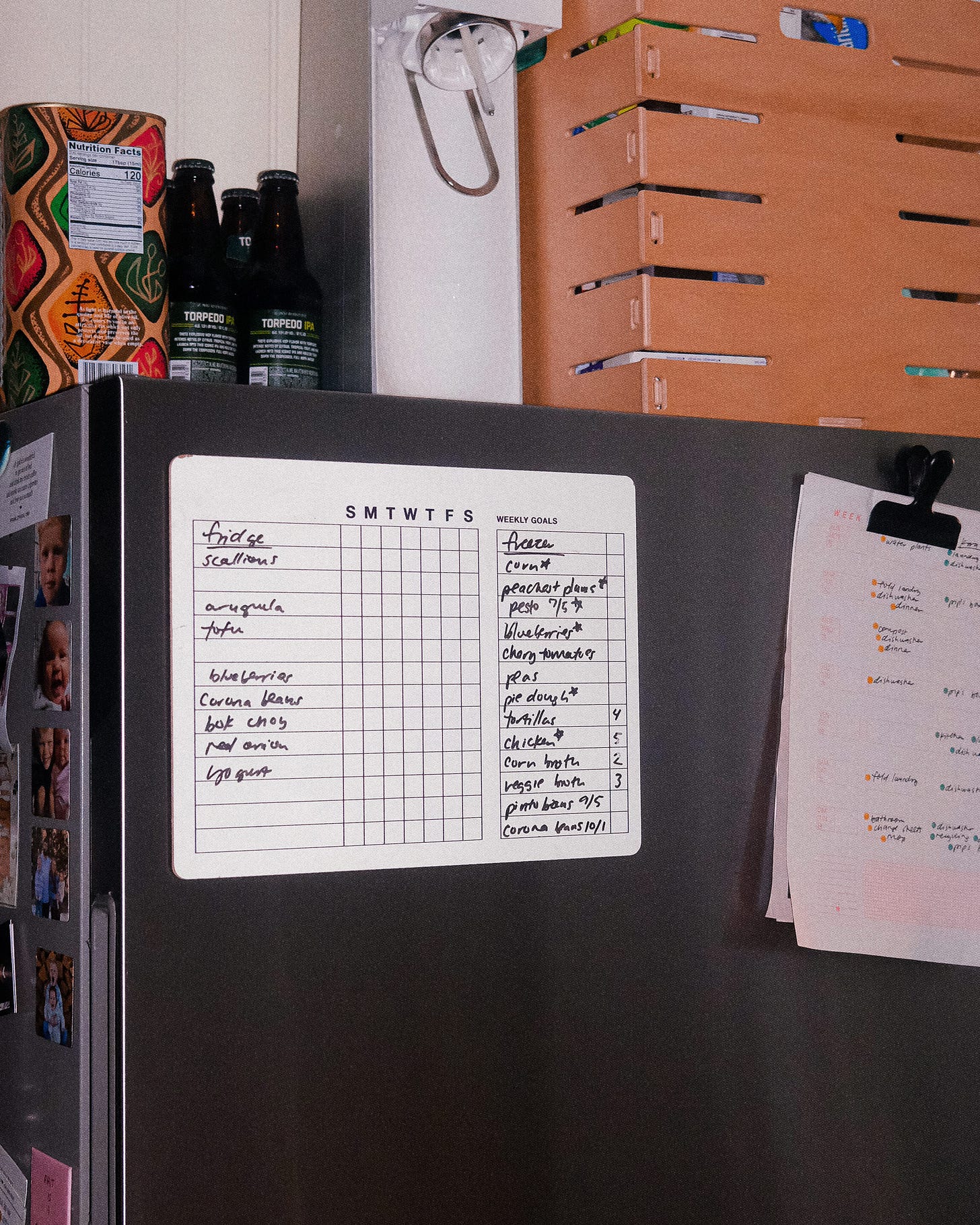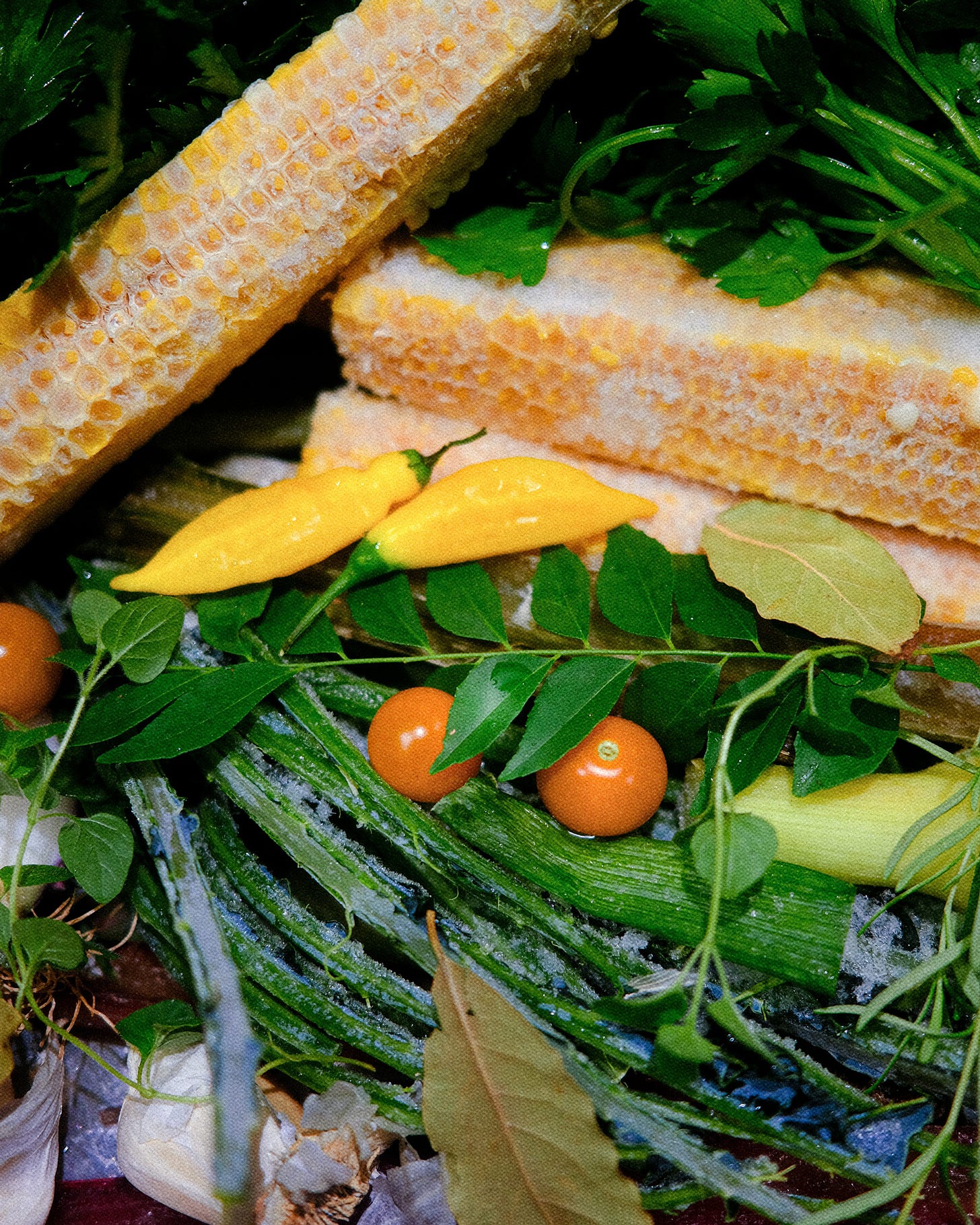My husband and I cook a lot—we’re the rare New Yorkers who don’t dine out for most meals. Skylar works from home, and I mostly work from home, too. Along with there always being dirty dishes, this means it’s easy for our fridge to get out of hand. A refrigerator clean-out after a busy week often leads to a full compost bucket and me doing the walk of shame to the city compost drop-off with meals that have gone off.
Last week I shared how I compost (well, how I separate food scraps), but I wanted to share how I’ve been working to have less to compost. Vegetable gardening has made me keenly aware of how many resources go into growing a single fruit or vegetable, and with the ever-rising cost of groceries, I want to eat more of what I buy. Below you’ll find my practical, not-very-glamorous tips to waste less food. I would love to hear yours, too.
Buy less more frequently
Before the CSA, we would plan meals seven to 10 days in advance and get our online grocery order delivered. When moods or plans changed, we would always wind up wasting ingredients. Now that we don’t meal plan and we finally have a quality grocery store within walking distance, we take more trips to buy perishable items. This give us more chances to buy intentionally and fewer opportunities to create waste.
Batch clean produce
I have been known to push off using leafy greens simply because I don’t want to clean them. We don’t do this every week with the CSA box, but we do try to wash produce like lettuce all at once before we put it away. Then we can throw together a quick salad or soup without having to think too hard about it, and I only dirty the salad spinner once. (I don’t know why, but I hate washing the salad spinner.)
To clean and store salad greens, I rinse two or three times, spin, then spread the leaves in a single-ish layer on a clean kitchen towel in a cool part of the kitchen. Once they are mostly dry, I store them in a reused Ziploc or Stasher bag with a paper towel tucked inside to wick up any moisture.
(If you’re on TikTok, you’ve probably seen the vinegar and baking soda produce “hacks,” which are, IMO, excessive. Organic produce and a good scrub are satisfactory. I do use the short, vinegar-water method for berries, which seems to work well enough, but we tend to go through them so quickly it doesn’t matter.)
Label and date refrigerated food
It was Skylar’s idea to label and date prepared food in our refrigerator. We just use colorful tape and a Sharpie. Being able to know whether leftover rice is from yesterday or six days ago or what the hell is inside that tupperware container has been more helpful than I thought it’d be.
Keep a fridge and freezer contents list
We started to keep a dry erase list of the refrigerator’s contents a few months ago and it’s been helpful for night-of meal planning and remembering the half-used container of ricotta in the back of the fridge. It’s especially useful for the black hole that is the freezer, too.
Make food preservation a part of grocery shopping
I wrote about my appliance-lite approach to food preservation earlier this summer—basically, when we can’t get through produce before it goes bad, I try to figure out some way to freeze, dehydrate, or ferment perishing produce.
We don’t have a second freezer, and since we freeze our compost scraps I don’t have as much room as I would like for fresh, seasonal ingredients. If you have room to spare, you’ll enjoy this book, “Freeze Fresh,” by Crystal Schmidt.
Freeze ingredients
There are many everyday ingredients I freeze to extend their shelf life. There are the obvious ones, like butter and yeast, but there’s also fresh, organic ginger root (I don’t bother to thaw it, just microplane a knob of it frozen and unpeeled), white cooking wine, pie and pizza doughs, and various prepared items like cooked beans and soups. Nuts and seeds, too, can benefit from frozen storage.
Make vegetable scrap broth
I’m a fan of Better Than Boullion’s vegetable stock concentrate as it’s far less wasteful than the pre-made cartons. That said, I’ve started freezing stock-friendly food scraps like peels and ends that I may otherwise compost and making them into broth weeks later. There are some vegetables to avoid for stocks, including brassicas, but it’s a forgiving process. I freeze the cooked stock in deli containers and drop off the cooked vegetables in the city’s organics drop-off bins.
Use more of the vegetable
There are more edible parts of vegetables than some of us have been led to believe. Carrot and leek greens, broccoli and cauliflower stalks, et cetera, can all be eaten. Linda Ly’s “No Waste Vegetable Cookbook” is a reliable resource for how to use vegetables from “nose to tail.” 🌱




